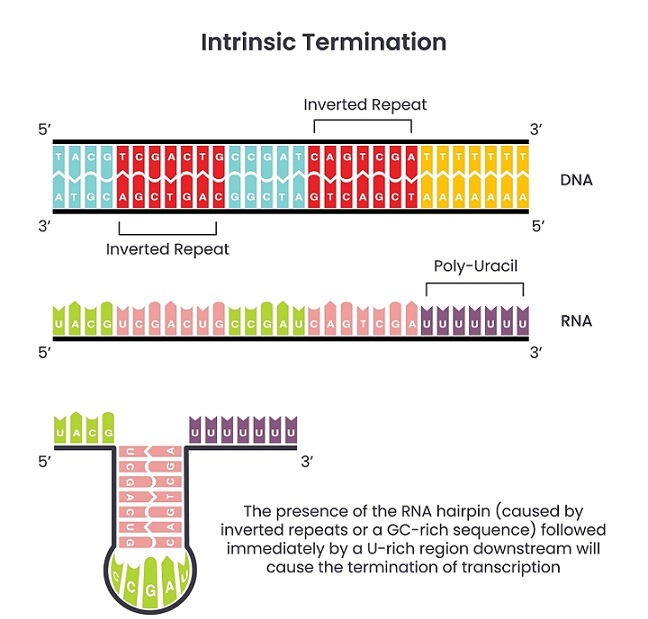
 Data Structure
Data Structure Networking
Networking RDBMS
RDBMS Operating System
Operating System Java
Java MS Excel
MS Excel iOS
iOS HTML
HTML CSS
CSS Android
Android Python
Python C Programming
C Programming C++
C++ C#
C# MongoDB
MongoDB MySQL
MySQL Javascript
Javascript PHP
PHP
- Selected Reading
- UPSC IAS Exams Notes
- Developer's Best Practices
- Questions and Answers
- Effective Resume Writing
- HR Interview Questions
- Computer Glossary
- Who is Who
What is a Pseudoknot and What is its Role?
Introduction
RNA pseudoknots are secondary structures that have a crucial role in regulating gene expression and protein synthesis in all organisms. These structures are formed when a single-stranded RNA molecule folds back on itself, creating a stem-loop structure that is interrupted by an additional stem-loop structure. The result is a structure that appears to be a knot, hence the term pseudoknot. This article will discuss the structure and function of RNA pseudoknots, as well as their importance in biological processes.
Structure of RNA Pseudoknots
The structure of RNA pseudoknots is unique in that they contain two stem-loop structures that are interconnected. The first stem-loop structure, or stem 1, is formed by base-pairing between nucleotides that are complementary within the same RNA strand. The second stem-loop structure, or stem 2, is formed by base-pairing between nucleotides that are complementary in different regions of the RNA molecule.
contain two stem-loop structures that are interconnected. The first stem-loop structure, or stem 1, is formed by base-pairing between nucleotides that are complementary within the same RNA strand. The second stem-loop structure, or stem 2, is formed by base-pairing between nucleotides that are complementary in different regions of the RNA molecule.
The two stems are connected by a loop region, which can range in length from a few nucleotides to over 100 nucleotides. This loop region can be single-stranded or contain additional stem-loop structures. The complexity of the loop region and the length of the stems can vary widely, resulting in a diverse set of pseudoknot structures.
Function of RNA Pseudoknots
RNA pseudoknots have been shown to have a variety of functions in biological processes. One of the most well-known functions is in regulating gene expression. Pseudoknots can be found in the untranslated regions (UTRs) of messenger RNA (mRNA) molecules, which are regions of the mRNA that are not translated into protein. The presence of pseudoknots in these regions can influence the stability of the mRNA molecule, as well as the efficiency with which it is translated into protein.
Pseudoknots can also play a role in the process of ribosome frameshifting. During protein synthesis, ribosomes move along the mRNA molecule, reading the genetic code and synthesizing a protein. In some cases, the ribosome can shift to a different reading frame, resulting in the synthesis of a different protein. RNA pseudoknots can influence the likelihood of ribosome frameshifting by creating a pause in the ribosome movement, allowing the ribosome to shift to a different reading frame.
In addition to their role in gene expression and protein synthesis, RNA pseudoknots have been implicated in a variety of other biological processes. For example, they have been shown to play a role in viral replication, RNA splicing, and RNA editing.
Importance of RNA Pseudoknots
RNA pseudoknots are important for several reasons. First, they provide a way for RNA molecules to fold into complex, three-dimensional structures. This folding is critical for the function of RNA molecules, as it allows them to interact with other molecules and carry out their biological roles.
Second, RNA pseudoknots provide a way for cells to regulate gene expression and protein synthesis. By controlling the stability and translation efficiency of mRNA molecules, pseudoknots help cells to respond to changes in their environment and to carry out specialized functions.
Finally, RNA pseudoknots are important from a scientific perspective because they provide a way to study the structure and function of RNA molecules. Understanding the structure and function of RNA molecules is critical for developing new treatments for diseases that are caused by RNA dysfunction, such as viral infections and genetic disorders.
Conclusion
RNA pseudoknots are a unique and important class of RNA structures that have been shown to play a variety of important roles in biological processes. Their ability to fold into complex, three-dimensional structures is critical for their function in regulating gene expression and protein synthesis, as well as in other biological processes such as viral replication, RNA splicing, and RNA editing.
Furthermore, the study of RNA pseudoknots is important from a scientific perspective, as it can provide insight into the structure and function of RNA molecules. This knowledge is crucial for developing new treatments for diseases that are caused by RNA dysfunction, such as viral infections and genetic disorders.
FAQs
Q1. What is an RNA pseudoknot?
Ans. An RNA pseudoknot is a secondary structure formed when a single-stranded RNA molecule folds back on itself, creating a stem-loop structure that is interrupted by an additional stem-loop structure.
Q2. What is the function of RNA pseudoknots?
Ans. RNA pseudoknots have a variety of functions in biological processes, including regulating gene expression, influencing the efficiency of protein synthesis, and playing a role in ribosome frameshifting.
Q3. How are RNA pseudoknots important?
Ans. RNA pseudoknots are important because they provide a way for RNA molecules to fold into complex, three-dimensional structures, allowing them to interact with other molecules and carry out their biological roles. They also provide a way for cells to regulate gene expression and protein synthesis, and they are important for scientific research into the structure and function of RNA molecules.
Q4. Where are RNA pseudoknots found?
Ans. RNA pseudoknots can be found in a variety of RNA molecules, including messenger RNA (mRNA), viral RNA, and transfer RNA (tRNA).

